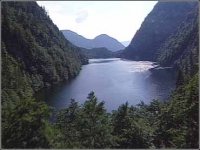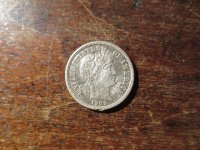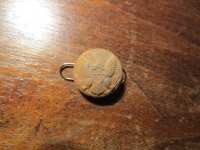kenb
Bronze Member
In the final days of the Third Reich, some Nazi officers loaded gold, documents and counterfeit British currency (pounds) into army trucks in Berlin, Germany, and drove south toward the Alps.
Some Nazi remnants -- a gold urn, personal seals, etc. -- have since been found in Bavarian and Austrian lakes such as Walchensee (Bavaria) and Altausee (Austria). Yet most of the Nazi's gold treasure is still missing. Many people believe that it was dumped into Lake Toplitz at the time of the downfall of the Nazi empire. The story of lake Toplitz has inspired many authors and filmmakers as well as treasure hunters who dived in the lake in search of the missing gold.
The Nazis had planned to destabilize the British economy by dropping counterfeit British pounds from airplanes over the country -- a plan they never carried out. Some of this counterfeit currency has been found by diving expeditions in Lake Toplitz. Other lakes in Bavaria and Austria are supposed to contain also Nazi gold treasures, yet nobody knows the details. Nor does anybody know what happened to the Nazis who transported the gold and secret documents.
Were they killed at the end of the war? Did they commit suicide? Did they flee to South America or other places?
The gold had been stolen from banks in occupied countries, had been broken out of the teeth of Jews, Gypsies and others who were killed in death camps like Auschwitz or had been robbed from victims of Nazi persecution (handicapped people, homosexuals, communists and socialists, Catholic priests and many others).
In charge of the concentration camps was a voluntary force called the SS, which also had an all-volunteer military branch ("weapons-SS"). Both the military branch of the SS and its concentration camp staff wore black uniforms with a cap that showed skulls and bones.
This was derived from the uniforms of the soldiers of the Duke of Brunswick, Germany, 150 years before and was intended to inspire fear, awe and horror. Not only Germans but also Frenchmen, Ukrainians, Dutch, Scandinavian and other European men served in the SS.
SS boss Heinrich Himmler has been quoted as saying, "Many Germans of our time have to vomit when they see these (SS-men in their) black uniforms, we know this and don't expect to be loved by anyone" (see The Order of the Death's Head by Heinz Hohne).
The SS and the Nazi party kept thorough records of all their lootings and killings but probably destroyed most of their records at the end of the war. One can only guess where the Nazi treasures are today. Maybe they are at the bottom of some lake. Maybe they'll stay there for good, until the end of time.
kenb
Some Nazi remnants -- a gold urn, personal seals, etc. -- have since been found in Bavarian and Austrian lakes such as Walchensee (Bavaria) and Altausee (Austria). Yet most of the Nazi's gold treasure is still missing. Many people believe that it was dumped into Lake Toplitz at the time of the downfall of the Nazi empire. The story of lake Toplitz has inspired many authors and filmmakers as well as treasure hunters who dived in the lake in search of the missing gold.
The Nazis had planned to destabilize the British economy by dropping counterfeit British pounds from airplanes over the country -- a plan they never carried out. Some of this counterfeit currency has been found by diving expeditions in Lake Toplitz. Other lakes in Bavaria and Austria are supposed to contain also Nazi gold treasures, yet nobody knows the details. Nor does anybody know what happened to the Nazis who transported the gold and secret documents.
Were they killed at the end of the war? Did they commit suicide? Did they flee to South America or other places?
The gold had been stolen from banks in occupied countries, had been broken out of the teeth of Jews, Gypsies and others who were killed in death camps like Auschwitz or had been robbed from victims of Nazi persecution (handicapped people, homosexuals, communists and socialists, Catholic priests and many others).
In charge of the concentration camps was a voluntary force called the SS, which also had an all-volunteer military branch ("weapons-SS"). Both the military branch of the SS and its concentration camp staff wore black uniforms with a cap that showed skulls and bones.
This was derived from the uniforms of the soldiers of the Duke of Brunswick, Germany, 150 years before and was intended to inspire fear, awe and horror. Not only Germans but also Frenchmen, Ukrainians, Dutch, Scandinavian and other European men served in the SS.
SS boss Heinrich Himmler has been quoted as saying, "Many Germans of our time have to vomit when they see these (SS-men in their) black uniforms, we know this and don't expect to be loved by anyone" (see The Order of the Death's Head by Heinz Hohne).
The SS and the Nazi party kept thorough records of all their lootings and killings but probably destroyed most of their records at the end of the war. One can only guess where the Nazi treasures are today. Maybe they are at the bottom of some lake. Maybe they'll stay there for good, until the end of time.
kenb





